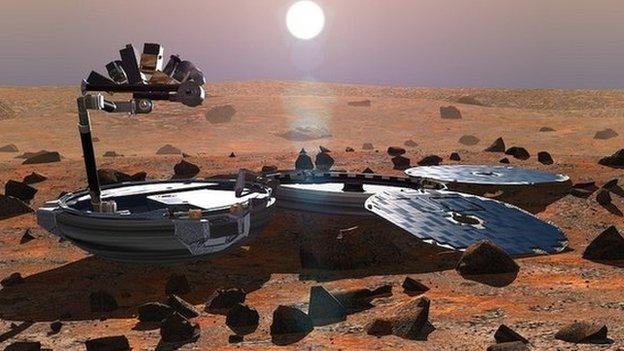The robot taking stained glass and a 'selfie' mirror to Mars
- Published
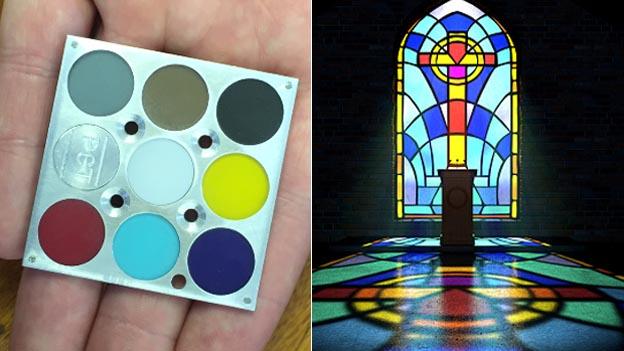
A scaled-down version of the calibration tile, which is inspired by a stained-glass church window
There is something reassuringly terrestrial about stained glass - which has been around for a thousand years - being mounted on a robot headed for Mars.
But the small coloured disks designed and painstakingly made for the European Space Agency's ExoMars Rover Mission 2018, external at Aberystwyth University are anything but decorative.
The team's glass and robot "selfie mirror" could help the world see the true colour of the Red Planet - and discover if it hosts life.
As part of a series looking at work being done in this area at the university, BBC Wales catches up with those working on the rover in the university's space robotics research group to find out how.
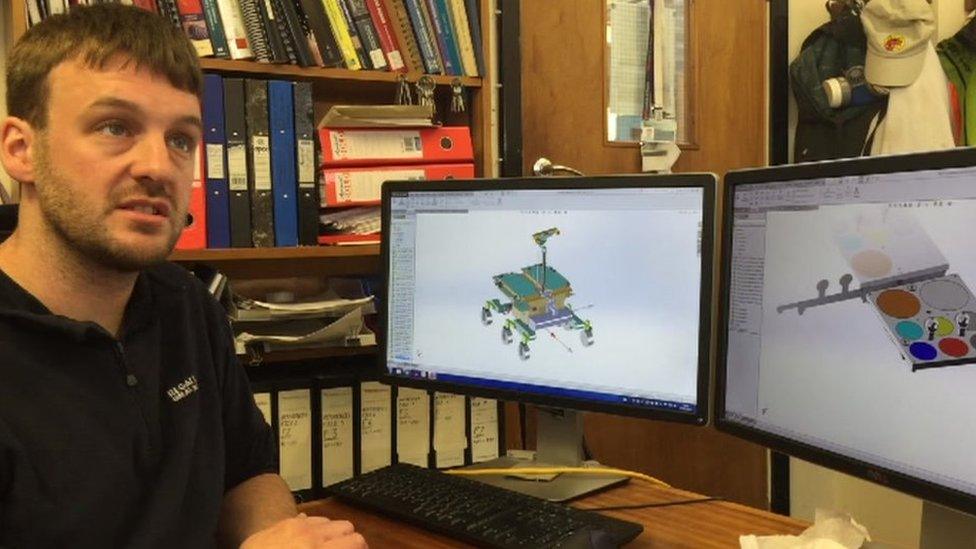
Dr Matthew Gunn has spent years with colleagues developing the ideal colour calibration checker for the Mars rover

An emulator version of the 1 megapixel panoramic camera, which will be mounted on the ExoMars Rover
The team - previously overseen by Prof Dave Barnes, who died last year, external - is developing calibration equipment for the panoramic camera on the rover.
Similar to a chart of "stable" colours used by photographers at the start of any session, the kit ensures the shades being captured in images of the Martian surface will be accurate.
If you are going to journey across the Solar System, you want to be certain your snaps are a true likeness.
"Unfortunately, we can't send a conventional paper-based colour checker to Mars," research fellow Dr Matthew Gunn said.
'Fade colour'
"It wouldn't survive the journey, it wouldn't get through all the cleaning stages needed. So, we have had to come with a new way of doing one.
"Because the Martian environment exposes things to large quantities of UV, which tends to fade colour, we have had to find something which is UV resistant.
"And the solution we came up with was stained glass. Stained glass has been used in church windows for hundreds and hundreds of years and the colours are still fantastically represented."
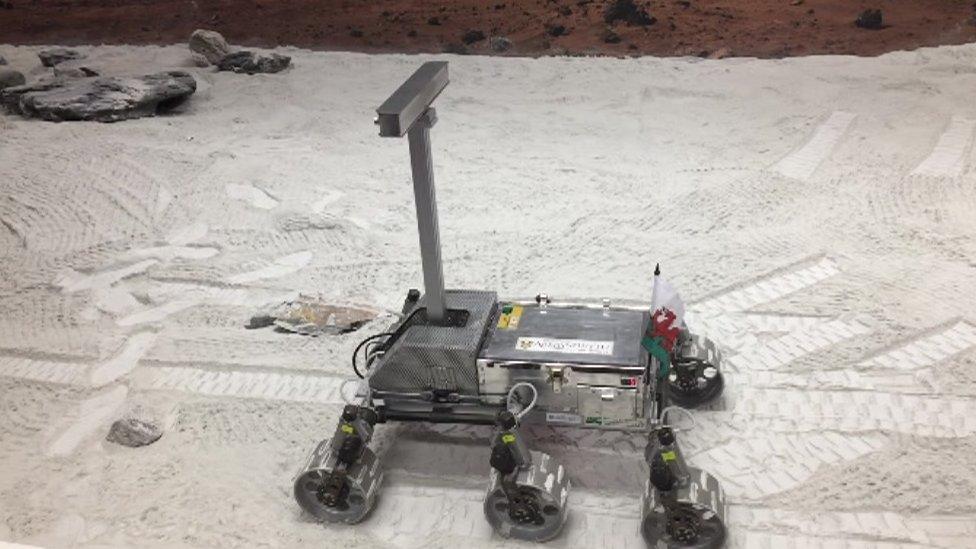
The university's half-sized ExoMars Rover, Blodwen, tests innovations and software the team has devised
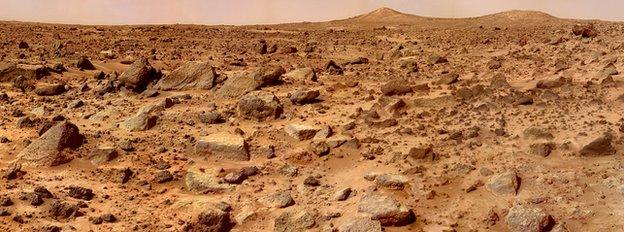
The nine circles of high-grade glass, which will be embedded in a small aluminium tile and mounted on the rover's front, have been tinted with hues selected from thousands of others.
The cut, ground and polished pieces will go through innumerable cleaning processes before the mission sets off.
Research associate, Dr Rachel Cross, said: "Because we're looking for life on Mars, we want to make sure we're not taking any with us."
'Selfie mirror'
And with the radiation on the nine-month space trek, super fine dust on Mars' surface and its huge temperature range - from 20°C down to -110°C - the instruments will need to withstand some pretty hostile forces.
Another of the team's innovations is the convex aluminium rover inspection mirror, resembling a bicycle bell, which allows the robot's cameras to view reflections of its undercarriage and rear.
Dr Mathew Gunn, of Aberystwyth University, explains how the instruments work
"It's recently been re-coined as the rover 'selfie mirror', external," Dr Gunn said, although the term has raised the eyebrows of some who worked on it.
The university's team are also responsible for a set of fiducial markers, objects which give a point of reference to guarantee the cameras are pointing in the right direction.
All the components will all play miniature but essential roles in making sure the sensitive manoeuvrings and recordings of a six-wheeled machine across the interplanetary void are not wasted.
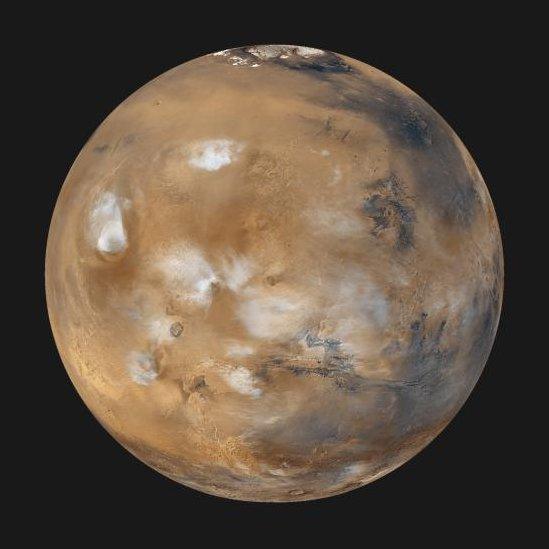
The fragile fortune of such missions is perhaps best illustrated by Beagle2, which was detected in January, after losing contact with Earth while trying to touch down on Mars in 2003.
Dr Gunn estimates the cost of sending 1kg of equipment into outer space is up to $100,000 US dollars (£66,000), meaning all the university's instruments will have to earn their weight.
The team has spent hour upon hour shaving them down to about 60g in total, meaning they could cost up to $6,000 (£4,000) to transport.
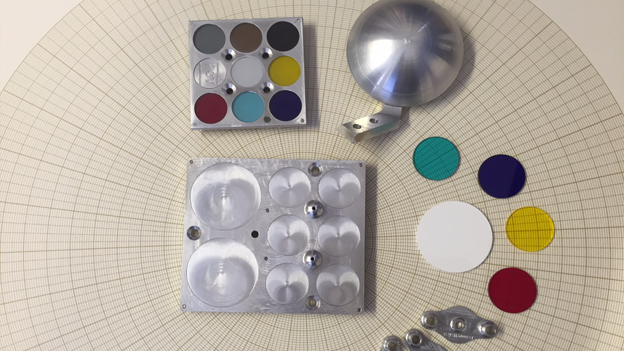
The scaled-down version of the calibration plate, it's larger cousin, the selfie mirror, stained glass discs and fiducial markers
Dr Gunn showed the BBC a ten-pack of the dainty glass discs that will now be put through a series of extreme tests and processes to ensure they are ready for an atmosphere at least 34 million miles (54 million km) from any church window.
"It's quite frightening to think that in four years' time one of those ten bits of glass will be on the surface of Mars," he said.
"It's really weird to have this stuff sitting in front of you."

Images and video
By Michael Burgess and Philip John
- Published3 October 2015
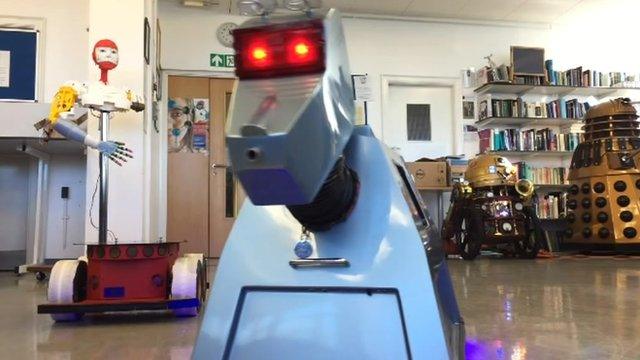
- Published3 October 2015
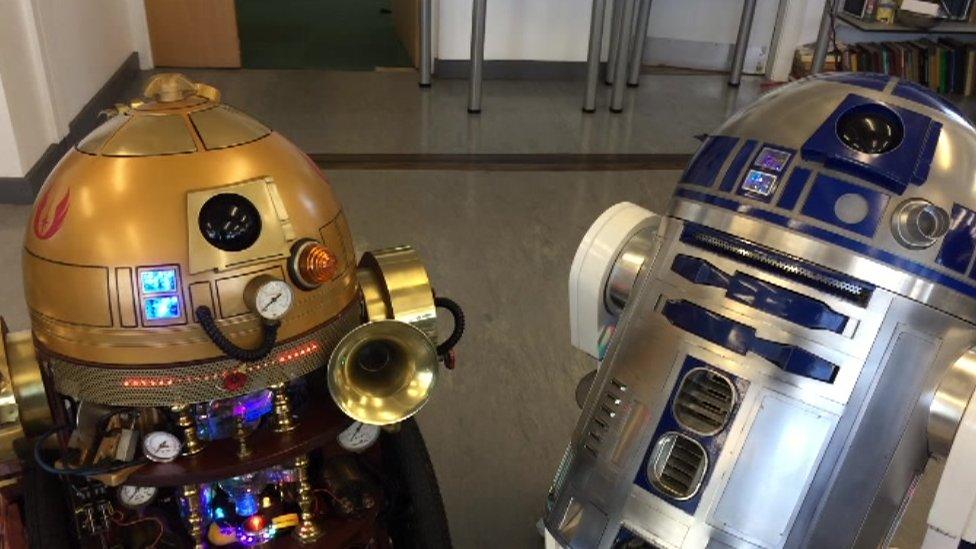
- Published14 July 2015
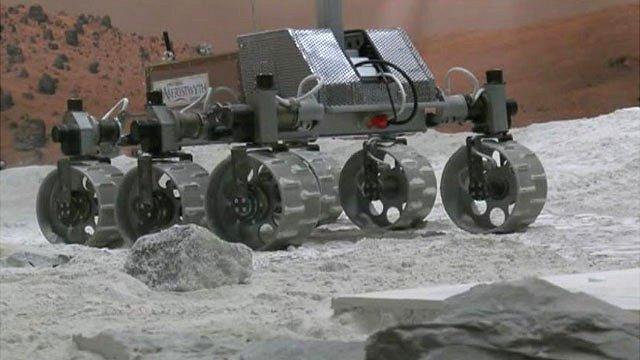
- Published16 January 2015
